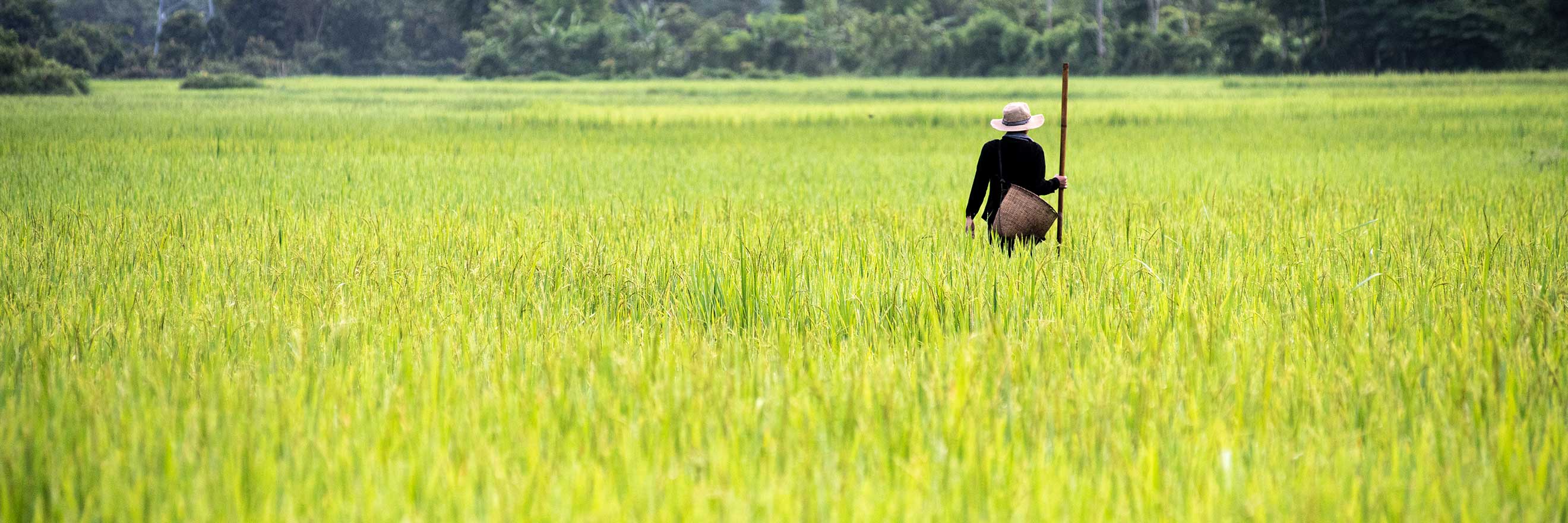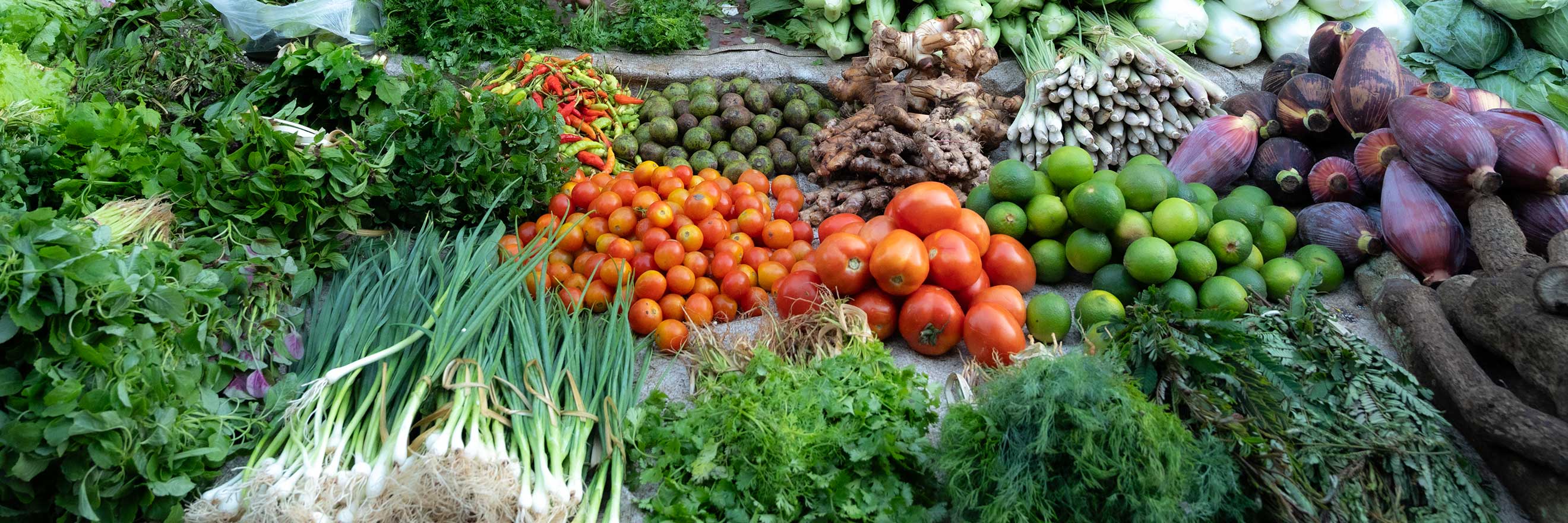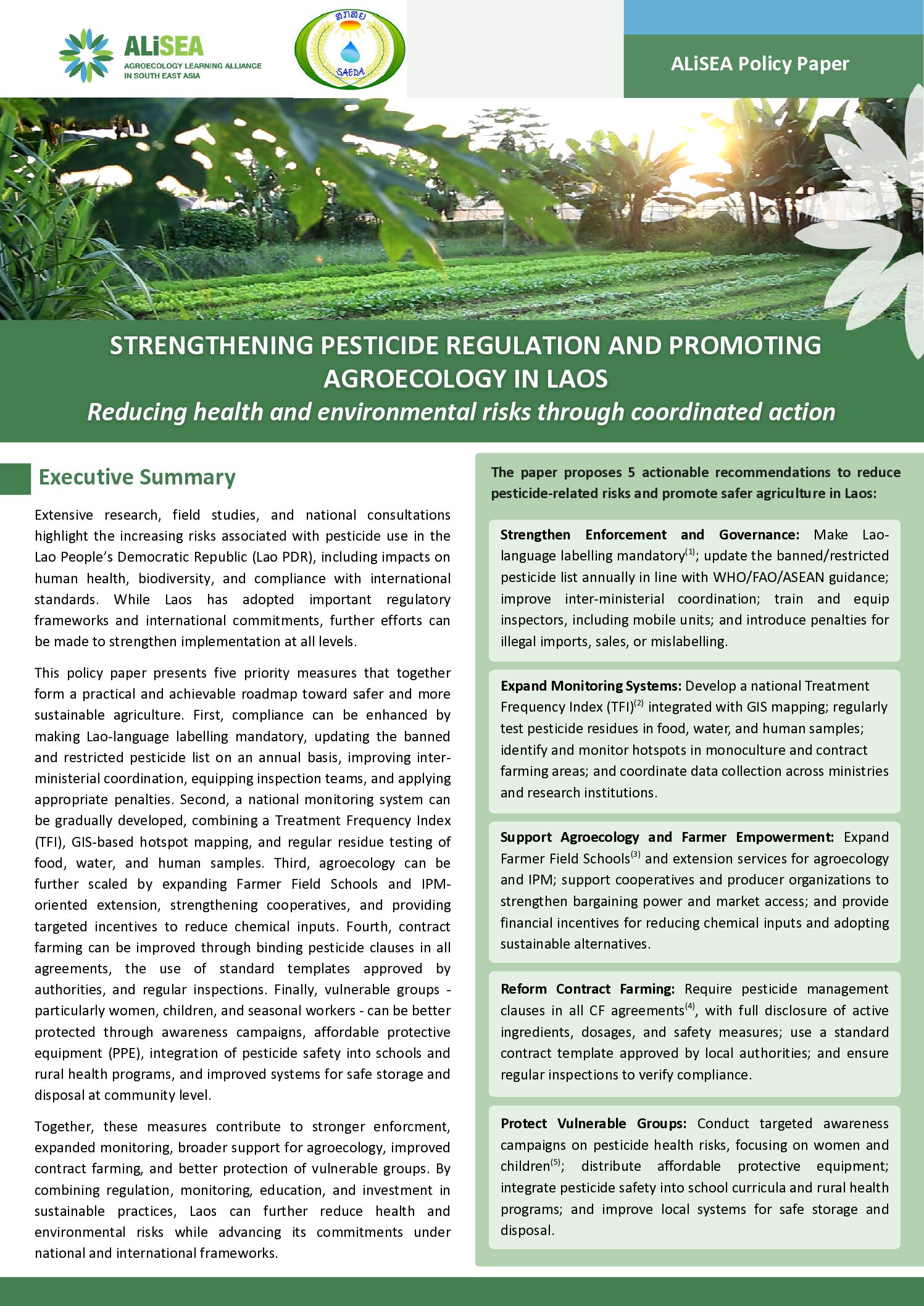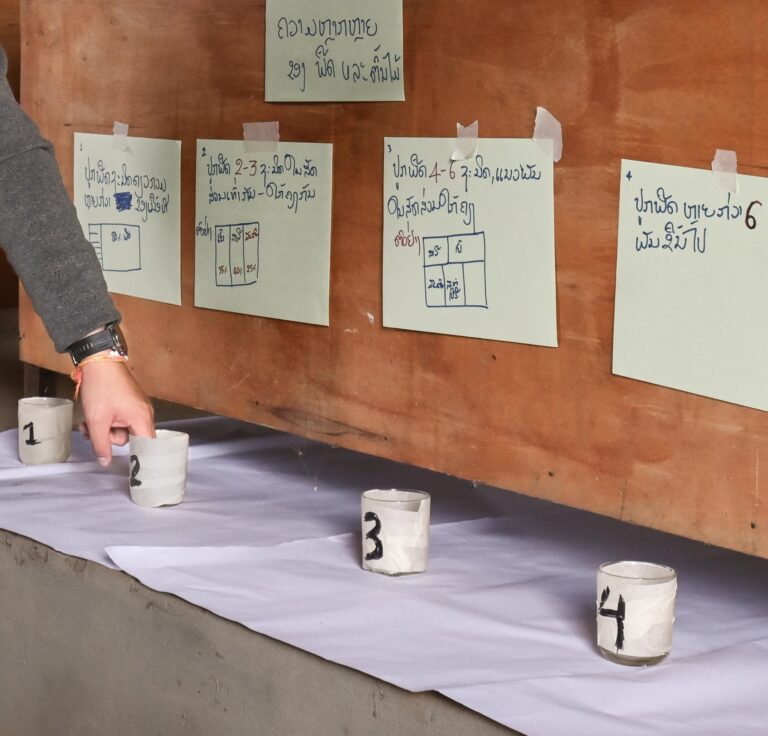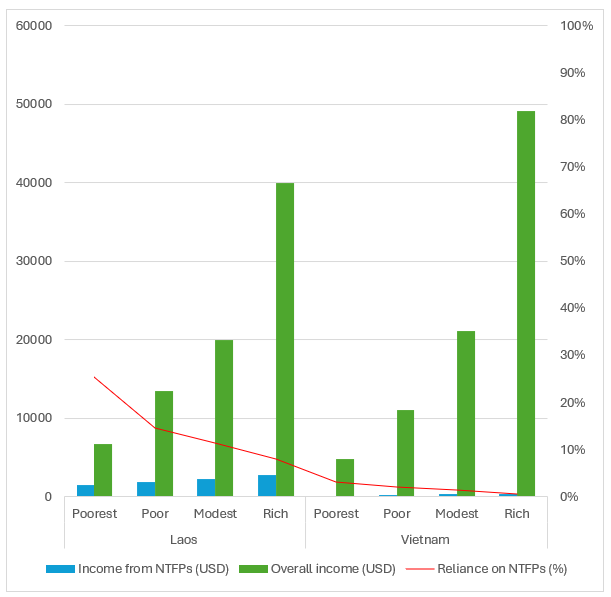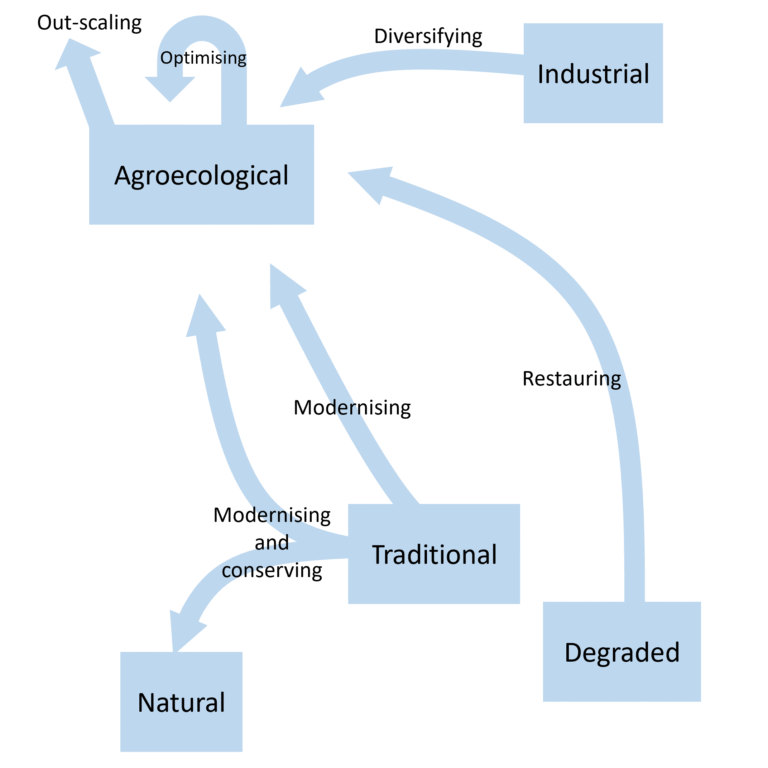The Policy Paper on Pesticides in Laos, developed by ALiSEA and SAEDA, presents five priority actions to reduce health and environmental risks from pesticide use while promoting agroecology. It calls for stronger enforcement of pesticide regulations, national monitoring systems, support for farmer-led agroecological practices, safer contract farming, and better protection for vulnerable groups. The paper provides a practical roadmap for a transition toward safer and more sustainable agriculture in Laos, aligned with national and international commitments.







